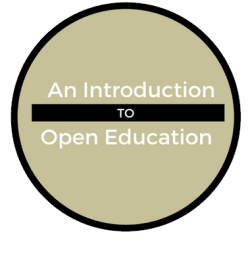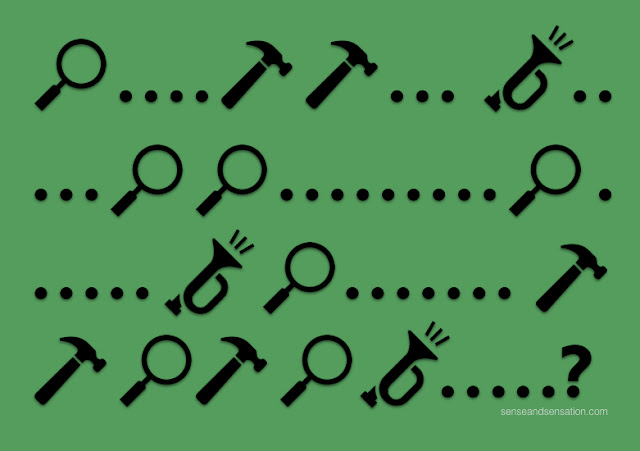A decade and a half ago, Web 2.0 brought with it the promise of shared knowledge and collaborative networks. It seems to me that education hasn’t realized this promise yet. We haven’t yet created a shared knowledge base or a fully scaled social network for educators. Surely, an open approach will be essential for succeeding in this. And yet, before the education sector has figured out how we might realize the promise of shared knowledge, before we have created a successful open environment for teachers to share careers-worth of wisdom and/or to connect at scale, before we have succeeded in education at what other industries have succeeded in, before we do this, we’re instead trying to catapult into Web 4.0, a digital future of artificial intelligence, adaptive learning, mind-to-mind communication, and more. We’re overleaping teachers and building tools that directly engage the learner.
Surely some of this is appropriate. The digital age offers many valuable educational tools and opportunities for students to use directly. But our dreams of hologram tutors, of fully digital curricula, and of machines that read our feelings and anticipate our mistakes are solutions for a future time. Meanwhile, while we are charting a bold future, we still haven’t succeeded at the past; we haven’t created a successful shared knowledge base; we haven’t connected teachers at scale. We still haven’t found a way to effectively promote and use what already works, in all varieties of classrooms.
What this suggests to me in the context of this week’s course materials on data, algorithms and competency mapping is that we could be doing more to measure the clicks of teachers, to assess effectiveness of teacher lessons, to algorithmically understand how teachers behave around pedagogical content, digital and non-digital—especially non-digital learning experiences, as these continue to be an enormous part of secondary and primary education. We could be refining our current imperfect solutions using new data and algorithmic research.
This is not a rebuke of or disdain for the kinds of projects on display in our weekly modules—I’m aiming, I think, only to draw attention to an area of open work that, at least in my experience as a secondary educator and in what I have read, remains unresolved. We want to capture and share the human side of teaching before we replace large swaths of education with digital tools and teaching. Yes, we should charge ahead with our digital learning tools and our open resources, and also we need to capture and/or establish an organized representation of existing good practice, “research-backed” or no.
In the work I’ve been doing, I’ve been thinking about algorithmic analysis of how teachers engage teaching content, of how customizing and remixing curriculum can demonstrate teacher competency, of data generated by teacher interactions. What are the new directions and questions in this arena, or have we stopped rapidly innovating here and instead directed our attention to resources students interact with directly?
I’m looking to be called out on this if I’m missing something. Have we sufficiently examined peer-to-peer networks for teachers? Are existing efforts more successful than I believe? OER Commons or the What Works Clearinghouse (curriculum)? Digital Promise (competency)? These are visionary. Are they successful? Why or why not? How can they be improved? By and large, my questions surrounding these topics have gone unanswered; I suspect that is because the great majority of the discussion in this class has been about open resources at the higher ed level: textbooks, academic research, etc.
~
Solutions at the secondary level revolve around this week’s themes. Two problems with establishing a knowledge base for secondary and primary education are the reusability paradox and Justin Reich's claim that curriculum doesn’t compile. But openness resolves the reusability paradox, and algorithms and teacher use data are necessary for solving the compiling conundrum. What I’ve learned from this week is that it’s important to be transparent about how that algorithm works. If, because there is a sea of content, the system promotes some content to some users and other content to other users—because, perhaps, it was created by teachers at schools in similar socioeconomic contexts—then the system should be open about that, and likely provide teachers the opportunity to either tweak that algorithm or find content in alternative ways.
Another challenge at the secondary level, when curriculum is diffuse, is understanding what makes high quality material. There are many approaches to assessing quality: ratings, likes, reviews, etc. Particularly relevant to this week, however, is that if some content is identified as high quality because engagement serves as a proxy for quality or because teacher competency is identified based on particular behaviors evident through data gathering, then, similarly, just as in the previous example, the system should be open about how competency is assessed or about what is being used as proxies for quality. Keeping this data open and being transparent about algorithms allows the community to measure the measures themselves, and thereby improve them. Does this also enable people to game the algorithms because they know how it works? Perhaps. Is there a middle ground? Perhaps. This will be some of my thinking in the coming weeks.
~
At the end of this course, what I think I have recognized most is that in all these areas—data, algorithms, research, copyright, and more—openness is a philosophical approach. The leaders of this course—Wiley, Siemens, and our stalwart commentator Downes—are philosopher kings. (And there are queens out there, too, and one wishes they were more present in the course.) Their work grows out of a stance that openness is not only better, but right. Certainly, I agree.
But this belief, of course, makes many things complicated: sustainability, incentive structures, and more. Not everyone freely gives. Not everyone expects that something free can be valuable. Not everyone wants to reuse, revise, or remix.
Still, in the world we live in, in which education is a provision of the state, in which education is a civic, social, and personal necessity, and especially in which education is valued but teachers increasingly seem not to be, then the resources for providing or receiving a good education should be part of the commons, part of a shared wealth.
I’m enthusiastic about the possibilities ahead and look forward to collaborating with colleagues in the future as this work continues.










